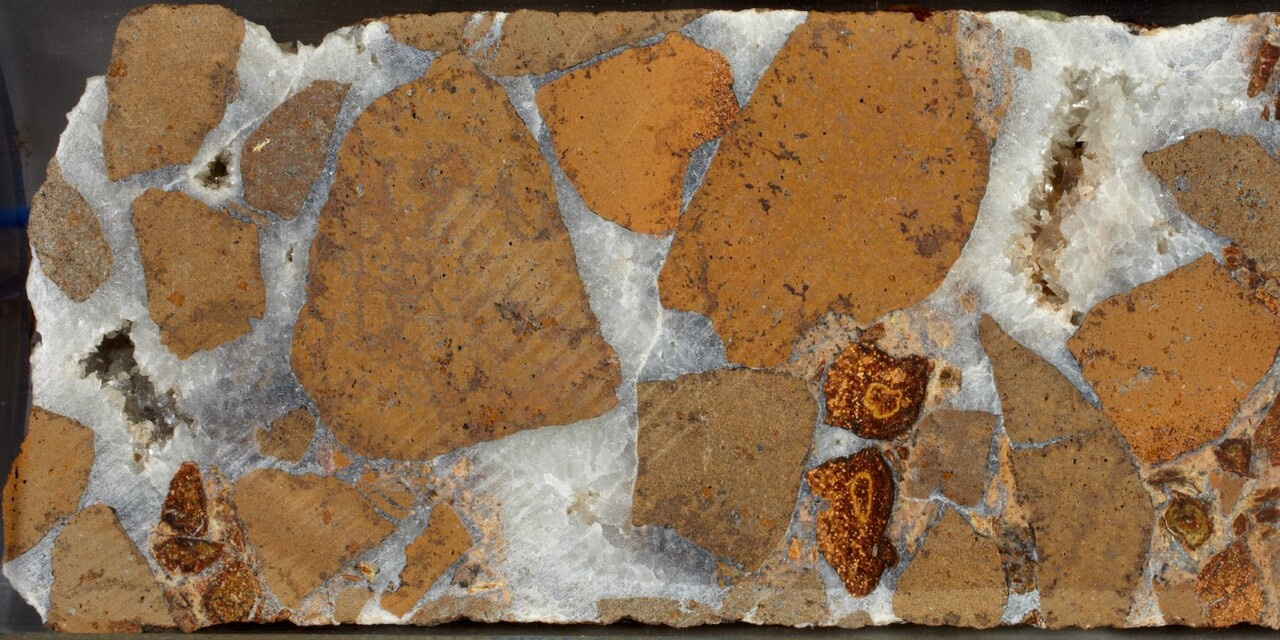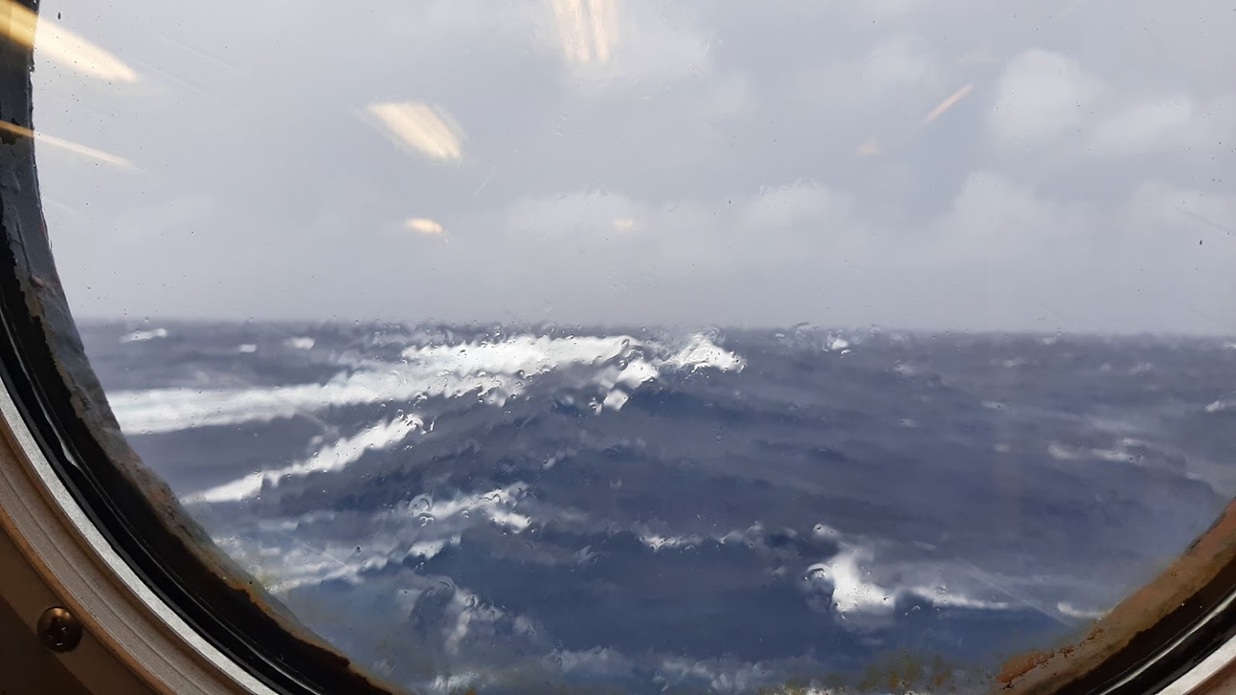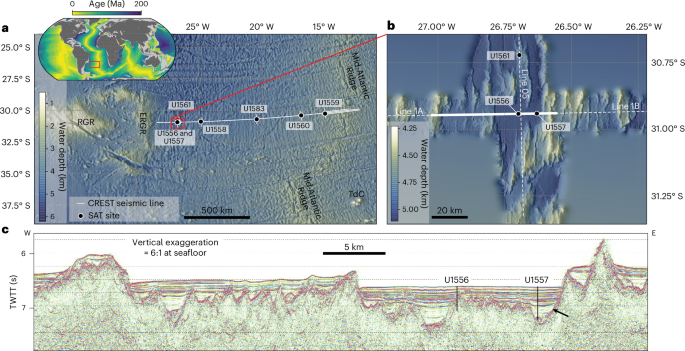How we discovered a giant geological sponge for carbon in rocks deep below the seafloor
Published in Earth & Environment

Oceanic crust and global seawater chemistry
The oceanic crust, like the oceans overlying it, covers around two-thirds of the Earth’s surface. Ocean crust is formed through volcanism at mid-ocean ridges where oceanic plates diverge and mostly consists of mafic igneous rocks like basalt, which are gradually blanketed with sediment over time. As the crust ages and traverses the vast seafloor, these volcanic rocks react with the overlying ocean water; it is estimated that the entire volume of the Earth’s oceans is cycled through the crust every 400,000 years. These interactions modify the composition of both fluids and rocks and can lock up CO2 through precipitation of solid calcium carbonate (CaCO3) in voids within the rock. Ultimately this exchange serves to modulate the chemical composition of the oceans and the atmosphere over geological timescales.

Challenge: a hole in our sampling
Although there are plenty of cores from the oceanic crust from scientific ocean drilling by the International Ocean Discovery Programme (IODP) and its forebears, there was, until recently, a dearth of samples from middle aged crust (circa 20–120 Myr old). This is a critical age period during which it is thought the crust may stop exchanging heat and chemistry with seawater. Added to that, prior ocean drilling was somewhat scattershot, with holes spread across crust of different ocean basins, ages, spreading rates and sediment thicknesses, making it hard to unravel the contribution of each of these potential controls on hydrothermal processes. Together, these issues have made it difficult to determine important chemical fluxes between the crust and oceans – like the rate of carbon storage in the crust – and their contribution to global geochemical cycles.
The South Atlantic Transect
The South Atlantic Transect (SAT) was conceived to address the above shortcomings by sampling an age transect of volcanic basement across an oceanic plate. This was achieved by drilling and sampling a series of cores in oceanic crust ranging in age from 7 to 61 million years, all formed at the same section of the Mid-Atlantic Ridge. This took place over two expeditions (IODP Expeditions 390 and 393) which between them drilled a series of six main basement holes and recovered nearly half a kilometre of hard rock cores.

Taking to sea
Even discounting the ten years lead author Roz Coggon spent developing the drilling proposal, we had a long run up to the cruise. Originally scheduled to sail in 2020, it was delayed until April 2022 by the COVID pandemic. Even then, the chance of someone aboard becoming infected with coronavirus was taken incredibly seriously, especially given we would be spending two months in the middle of the Atlantic, far from medical help. To ensure everyone was COVID-free before embarking, we all had to spend a full two weeks in quarantine in Cape Town, interacting with the city only through room service, which would be left outside our doors.
Once on board we got used to the rhythms of life at sea, which consisted of revolving 12-hour shifts starting at either midday or midnight. Having switched sleeping patterns to get ready for the night shift, half of us were then entirely nocturnal for the next two months. After a 10-day transit to our first site, we finally began coring, reaching >300 m into the crust at our first and oldest Site (U1556) in 61.2 Myr old crust. After about 3 weeks we transited just a few km to our 2nd Site (U1557) and what would prove to be the fascinating subject for this paper. Coring at Site U1557 sought to test the effects of sediment thickness on alteration by targeting similarly aged crust beneath much deeper (600m) sediment than at our first site. Or so we thought.

Expect the unexpected
As we had at Site U1556, we first encountered breccia, essentially a rubble of broken up basalt originally formed at the seafloor before being buried by sediment. We expected to quickly drill through this into the lava flows and pillow basalts of the oceanic crust proper, but it just kept going: core after core of breccia. The cores were spectacular, often coming up in metre-long unbroken pieces (which for anyone who has experienced scientific ocean drilling in volcanic basement is not always the case). Added to that, we weren’t drilling into solid rock; this was a rocky rubble, so by any rights this should have been particularly difficult to drill. What was so special about this rubble?
Breccia as a globally significant sink for CO2
Carbonate cement! Very quickly we realised that there was a lot of carbonate cement holding that rubble together. In some sections this made up as much as 20% of the total volume of the rock. On board we painstakingly logged the proportion of carbonate cement, along with every secondary mineral vein, providing one of the key datasets underlying this paper.
Back on land there was much more hard work to be done, including a suite of isotopic and chemical analyses in the labs. Strontium and oxygen isotopes from the carbonates allowed us to place constraints on their formation age and, importantly, indicated that some were formed >27 Myr after crustal formation, suggesting a prolonged history of carbonate formation. Carbon abundances analyses from authigenic material and altered basalt clasts completed the carbon inventory of the rocks. Combining these data with the shipboard logging data for calcite cement and veins, we calculated a weighted average of 7.5 wt% CO2 for the entire breccia sequence. This is nearly double that of any previous sampled oceanic crust (0.2–4.2 wt% CO2).

The final important piece was to determine how much breccia might be present on slow spread crust like that in the Atlantic (which constitutes around a third of the seafloor globally) and how much carbon this might take up. This is inherently difficult since the breccia is discontinuous and appears to form mainly against large normal faults during oceanic plate spreading. To overcome these difficulties, we modelled the resulting breccia accumulation as a talus slope, formed against the normal faults within the axial valley at the mid-ocean ridge. We derived a simple relationship between fault throw and breccia volume which allowed a volume of breccia to be determined at multiple sites in the Atlantic and Pacific.
Looking ahead: global tectonic controls on seawater-crust hydrothermal cycling
Combining our mean estimates of breccia thickness and carbon content suggests that uptake of CO2 by breccia offsets 20% of the CO2 outflux associated with volcanism during formation of the crust itself with major implications for carbon budgets. At the upper end of our estimates for breccia thickness, the offset could even account for more than 100% of the mid-ocean ridge outflux. In either case, this illustrates that breccias formed on slow spread crust can act as a globally significant sponge for seawater carbon. As a result, changes in the age distribution of the oceanic crust over the Cenozoic (66 million years ago to present) will have an important impact on the global geological carbon cycle, as well as that of many other important geochemical cycles.
Follow the Topic
-
Nature Geoscience

A monthly multi-disciplinary journal aimed at bringing together top-quality research across the entire spectrum of the Earth Sciences along with relevant work in related areas.
Related Collections
With Collections, you can get published faster and increase your visibility.
Progress towards the Sustainable Development Goals
Publishing Model: Hybrid
Deadline: Ongoing
Landslide triggers and hazards
Publishing Model: Hybrid
Deadline: Dec 31, 2025





Please sign in or register for FREE
If you are a registered user on Research Communities by Springer Nature, please sign in